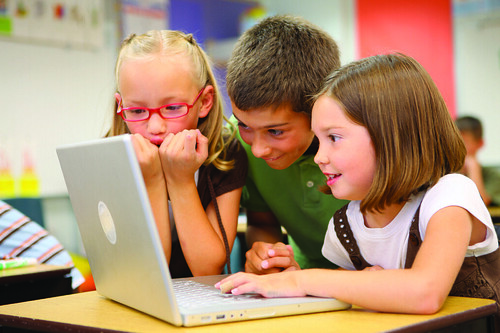Introduction to technology for educators or EME2040 was a very different class compared to all the other classes I have taken for my education major. I got to read every chapter and understand many key concepts that helped me enhance some of my technology use for this class. Although we jumped a couple of chapters it was well organized for this class. This all started with the different types of technologies that a teacher can use to enhance technology in the classroom. The different features that one as a future teacher can put into a lesson plan as (Maloy, et al p. 5) mentions using technology as teacher does not require using computers in every teaching situation but rather continually asking: "What can teachers and students do with technology that cannot be done without it?". This article I found was very interesting and had some great information on how teacher's struggle with technology.
Another of the most important things that I learned in this course was teacher centered learning and student centered learning. The goal of a teacher is to teach and find their own way of making it work so that the students can take all that information with them. Teacher's should always put their students and learning first and this concept was what transformed my way of thinking as a future educator. This concept combined with student learning I think would work best together because the teacher and the student are both actively participating. Although student centered learning is a challenge for the students because they are using all of their known knowledge to learn and participate in the assignments that come straight from the teacher the real challenge is combining these two things learning features together.
Lastly, next generation web 2.0 presentation tools such as prezi, animoto, and glogster. These are some of the tools that I learned how to use while in this course. Thanks to the blog posts I have enhanced my use of technology I learned about web tools that will help my students be more interested in what I have to say. I can show them visually while they take notes and they can even create their own in due time depending in their grade level. Technology has advanced and it will keep advancing at a fast pace, but for now here are some examples of the web tools that this chapter showed me would be useful in the future.
- Prezi allows teachers and students to create visual displays collaboratively online using nonlinear approaches to information presentation (Maloy et, al p. 224).
- Animoto is also another next-generation tool, in which teachers use video clips, pictures, sound, and text to expand how information is presented and received (Maloy et, al p. 224)
- Glogster lets teachers and students created digital posters (called glogs) that combine the use of images, sounds, and graphics with text (Maloy et, al p.224).
Resources:
Jeimy, R (September 18, 2016) What would you do. With powtoon
Maloy, R., O'Loughlin, R., Edwards, S., & Woolf, B. (2013). Transforming Learning with New Technologies. 2nd Edition. Boston, MA: Pearson Education Inc.
Powtoon. "Introduction to Technology." Youtube. N.p., 24 Feb. 2015. Web. 8 Dec. 2016.

